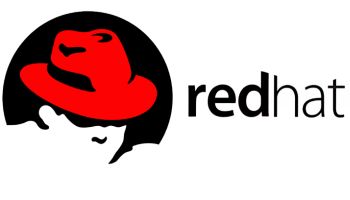Red Hat Enterprise Linux 6.5 Arrives With Precision Timing

Red Hat’s new enterprise Linux release launches and offers new security, virtualisation and time-keeping features
The new Red Hat Enterprise Linux 6.5 (RHEL) release has arrived and offers a number of significant new features.
RHEL 6.5 first made its public appearance as a beta in early October and is now ready for general availability. The RHEL 6.5 release is the second milestone update for Red Hat’s flagship platform in 2013, following the release of RHEL 6.4 in February.
Precision Timing
A key addition in the new RHEL 6.5 release is support for the Precision Timing Protocol (PTP). PTP enables the Linux operating system to precisely time-stamp operations down to submicrosecond levels of accuracy, which is a critical feature for those in the financial services industry. Financial services is a big market for Red Hat, which has powered the New York Stock Exchange since 2008.
PTP now complements the existing Network Time Protocol (NTP).
 “One advantage that PTP has over NTP is hardware support present in various network interface controllers (NIC) and network switches,” Siddharth Nagar, principal product manager, Red Hat Enterprise Linux, told eWEEK. “PTP is capable of achieving submicrosecond accuracy when enabled in conjunction with this specialised hardware.”
“One advantage that PTP has over NTP is hardware support present in various network interface controllers (NIC) and network switches,” Siddharth Nagar, principal product manager, Red Hat Enterprise Linux, told eWEEK. “PTP is capable of achieving submicrosecond accuracy when enabled in conjunction with this specialised hardware.”
Using NTP and PTP is not an either/or proposition, as NTP can also be configured to use PTP for time synchronisation, Nagar explained. From a user perspective, while PTP is more complex to deploy, Red Hat Enterprise Linux 6.5 includes all the necessary software and documentation with the platform to make it easier to cross over that hurdle, he explained.
Security Boost
Security also gets a major boost in RHEL 6.5 with a new centralised security Certificate Authority (CA) system. With modern security infrastructure, CAs are both the issuing authority for a security certificate and also the place where users and systems go to validate that a given certificate is authentic.
Enterprises frequently use certificate authorities (CAs) that are private to the organisation, Nagar explained. The private CA certificates are not signed by a public certificate provider (like Verisign, etc.) but are acceptable for internal use.
“Prior to this enhancement, there was no consistent mechanism for registering these private CAs on the system so that Web browsers like Firefox and other services could reliably trust them,” Nagar said. “Red Hat Enterprise Linux 6.5 includes new functionality that allows for managing certificate authorities that are recognized systemwide.”
Virtualisation Improvement
Virtualisation is also improved in RHEL 6.5 with new support to enable and disable virtual CPUs (vCPUs) as needed on a running system. The new support enables more agility to scale up or scale down the computing resources allocated to a given virtual guest, running on a RHEL server.
“Prior to Red Hat Enterprise Linux 6.5, vCPU hot-plugging was not supported and it was not possible to enable or disable vCPUs in a running virtual guest,” Nagar said.
With RHEL 6.5, Red Hat is now beginning to provide limited support for the new Docker container technology. Containers are lightweight virtualisation constructs that can be more efficient with memory and storage space than traditional virtualisation hypervisor technologies.
“Red Hat and Docker have jointly collaborated to ensure that Docker images can be run on Red Hat Enterprise Linux 6.5, but customers should refer to Docker for supported versions,” Nagar said. “Red Hat Enterprise Linux 6.5 now includes the necessary support in the operating system for Docker; however, users will need additional software directly from Docker to manage and manipulate images.”
The reason RHEL users will still need to get additional software from Docker is that it relies on Linux Container functionality, which isn’t yet fully supported in Red Hat Enterprise Linux. Regardless of where the software is coming from, the net new capability is that users are able to run Docker containers on Red Hat Enterprise Linux 6.5, Nagar said.
RHEL 6.5 is the fifth milestone release update since RHEL 6.0 first came out in November 2010. Red Hat Enterprise Linux 6 is now a hardened and mature platform, powering critical business applications, while also serving as the foundation for the expanding portfolio of Red Hat products, Nagar said.
“In the future, expect to see an emphasis on innovation around new deployment models balanced with stability and scalability improvements,” he said. “Beyond feature enhancements, we will also continue to enable new hardware platforms as they are made available with our OEM partners.”
Are you a Linux expert? Try our quiz!
Originally published on eWeek.